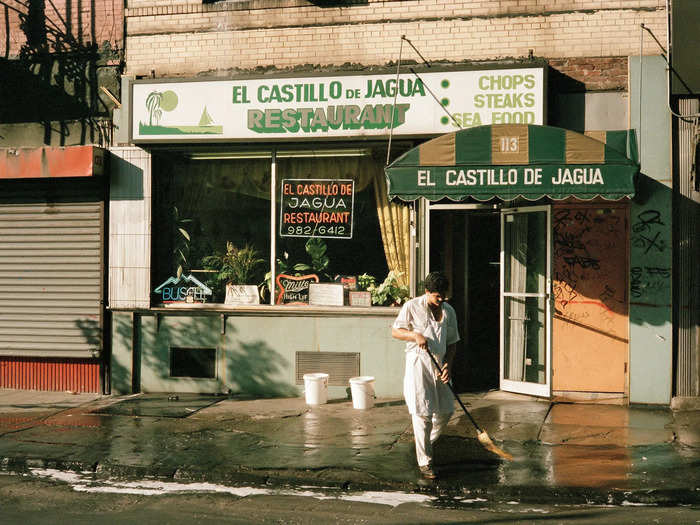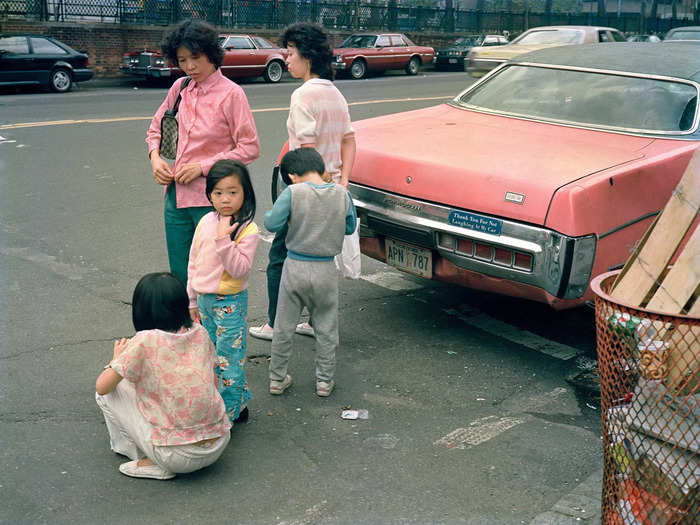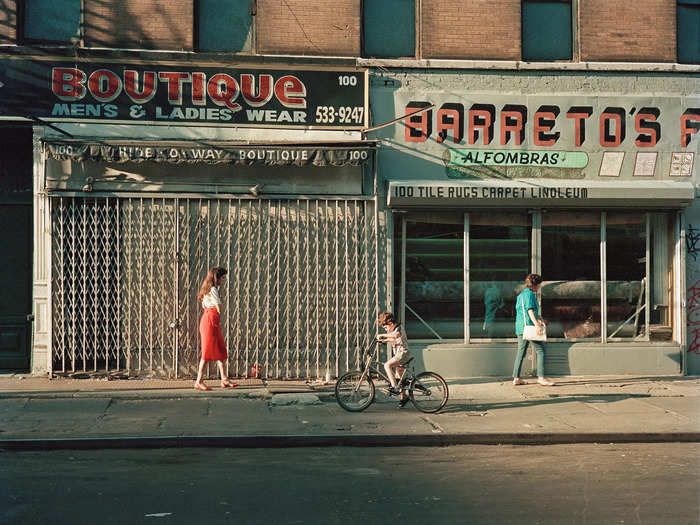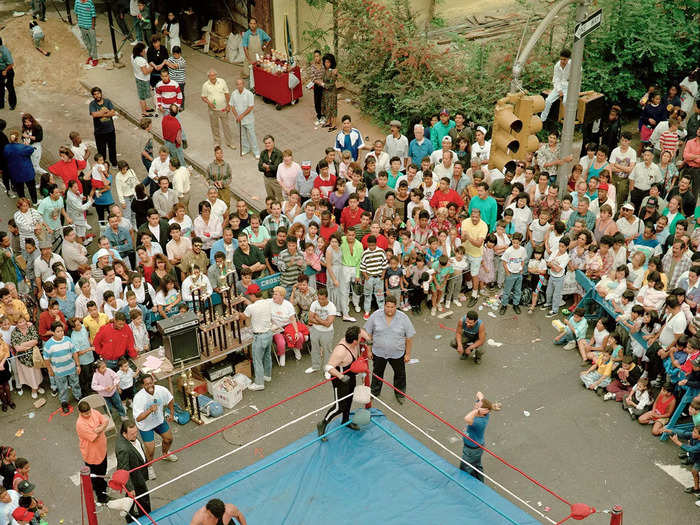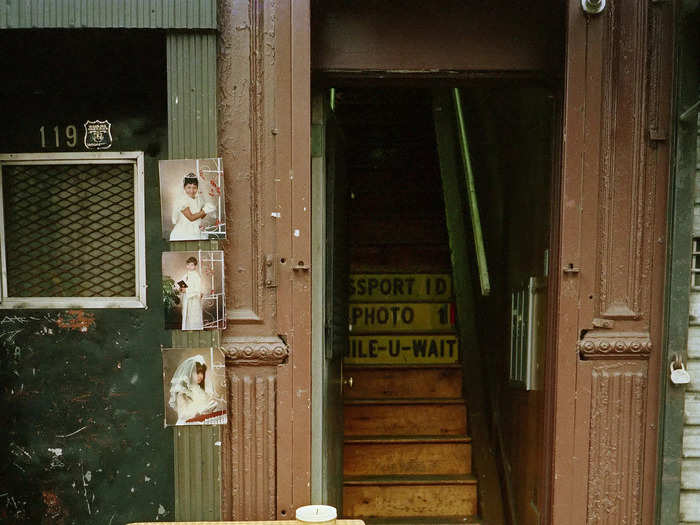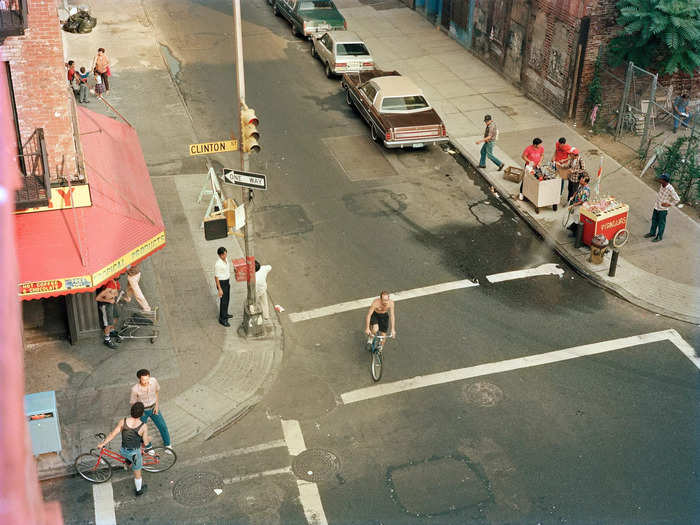Fire Escape Viewing on Stanton Street, 1990Tria Giovan
- The Lower East Side has always been a hub for immigrant and working class families.
- In the 1980s, many media depictions presented the neighborhood as crime-riddled and dangerous.
One of the few guarantees in New York City is change, and Manhattan's Lower East Side is no exception.
"This city is this kind of living, breathing organism in a way, and it's always evolving," said Tria Giovan, photographer and author of "Loisaida: New York Street Work 1984-1990," a revived collection of photographs printed 40 years after they were originally captured. Her intuitive archival process is an ode to the once stigmatized pocket of lower Manhattan.
The Lower East Side was known as a morphing community of people often at the margins of New York City.
El Castillo de Jagua on Rivington Street, 1985 Tria Giovan
Because of the constantly shifting demographics, common tongues in the neighborhood included Spanish, Chinese, Yiddish, and Polish.
Throughout New York's history, the Lower East Side served as a launching pad of opportunity, where newly-arrived immigrants from places like the Dominican Republic, Poland, China, India, and Japan could find community and success.
Although inextricably linked to the influx of Puerto Rican populations that lovingly called the area "Loisaida," the southeast corner of Manhattan Island was a hotbed for new communities.
Tria Giovan
From housing newly-arrived Irish immigrants in the 1800s, to becoming the "capital of Jewish America" in the beginning of the 20th century to serving as a hub for Caribbean occupants in 1940s and beyond, the cultural history of the area is ingrained into each street.
Due to exaggerated media depictions, many outsiders were fixated on crime and danger in the neighborhood.
Tria Giovan
The neighborhood was called everything from a "war zone," "a community virtually destroyed by the rampant heroin and cocaine trade," and a "corridor of poverty and violence."
Among this narrative, according to Giovan, little attention was paid to the everyday lives of those who called the Lower East Side home.
"The regular life was rarely focused on or addressed," said the Long Island-based photographer whose recovered images peel back the stigma of the community. "All of these neighborhoods sort of morphed together and were changing all the time."
Growing up in St. Thomas, Giovan attributes much of the vibrancy and visual noise in her photographs to the tropical palette she grew up around.
Tria Giovan
"Everyone thinks that the islands are these tropical serene places, but, in fact, where our house was, it was loud and there were roosters, dogs barking, and music. So to transport to that in my apartment in New York City in some ways felt kind of familiar, strangely," Giovan recalled.
Moving to Manhattan's Lower East Side in 1984, Giovan's archival process had little political motive or desire to promote an intentional counter narrative — the stories of the people around her and families she encountered were easily accessible to anyone who took the time to notice them.
"I felt like I was part of the community, even though I can't say that I was hanging out with people who knew everybody's name, but of course that's a New York City thing. You know the people at the bodega, you know the people at the dry cleaner or the laundromat, and it did feel like a community."
Giovan's archives evoke the subtleties of a Sunday afternoon walk around the neighborhood.
Tria Giovan
The landscapes appear as if they're familiar enough to fit in any urban site, while still feeling uniquely New York.
The shuttered storefronts or dilapidated buildings take a peripheral stance, opposing popular depictions of the time. The vibrant subjects, often families, are at the forefront of the setting we, as onlookers 40 years into the future, know to be on the brink of change.
Despite its history as a home to working-class immigrant families, inevitable demographic shifts have arrived yet again since the turn of the century in favor of working professionals.
Tria Giovan
"To walk around and see some of the old storefronts that were so representative of a time, an era that had passed," Giovan added. " I have recently wandered around a bit and it's a completely different landscape but still feels like the Lower East Side. It has its own unique quality."

